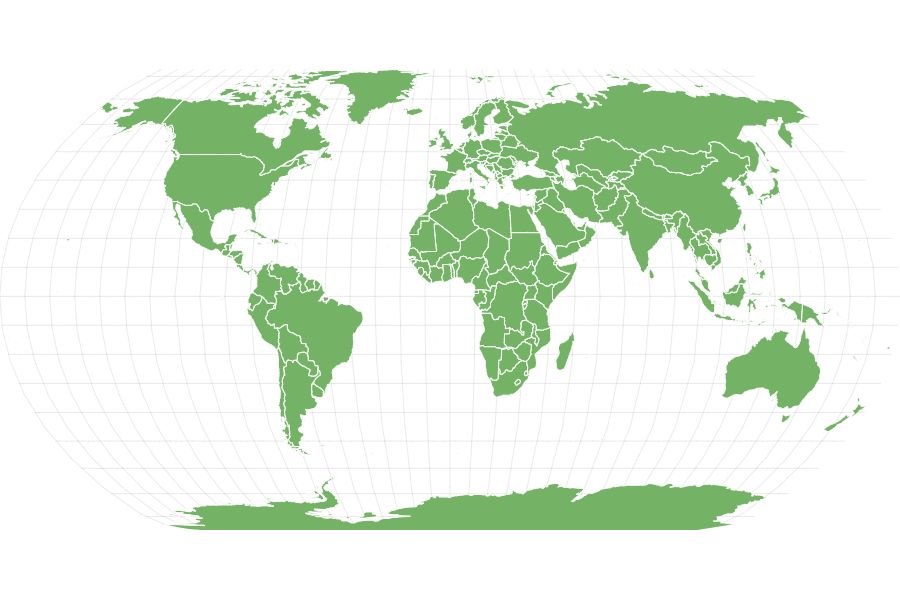Insect
Insecta
Insects go back over 350 million years, making the creatures older than man, flowering plants and dinosaurs.
Advertisement
Insect Scientific Classification
- Kingdom
- Animalia
- Phylum
- Arthropoda
- Class
- Insecta
- Scientific Name
- Insecta
Insect Facts
- Fun Fact
- Insects go back over 350 million years, making the creatures older than man, flowering plants and dinosaurs.
- Other Name(s)
- Bugs
Insect Physical Characteristics
- Skin Type
- Exoskeleton
View all of the Insect images!

Insects are one of the most plentiful and common species in the world. Depending on the resource, it’s believed there are somewhere between 900 thousand and ten million different kinds of insects.
Insects potentially make up 90 percent of all forms of animal life. And like people, each species has its unique appearance, behavior, habitats, characteristics, and other factors. They are different based on family, region, weather, and more.
One thing all insects have in common is their segmented bodies, external skeletons, and jointed legs. Another distinct feature is they are all small compared to most creatures.
The Role Insects Play
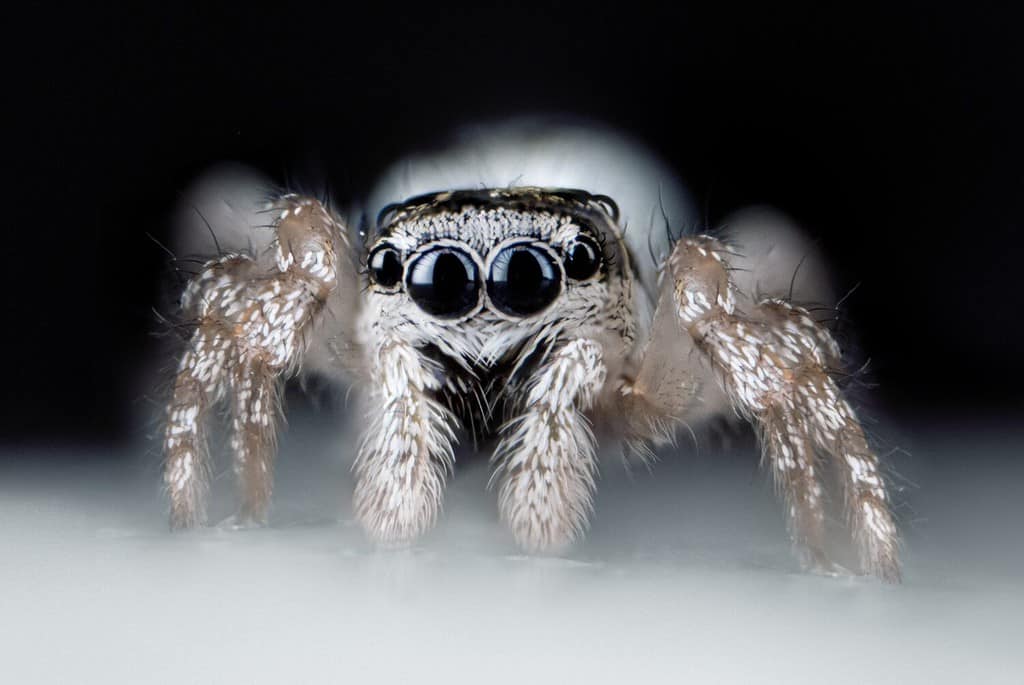
Some insects are pests while others have become pets such as the growing popularity of owning jumping spiders.
©Dmytro Khlystun/Shutterstock.com
Some types of insects are pests. Others play a beneficial role in their ecosystems. There are species that carry disease, attack other animals with their stings and bites.
Many interfere with humankind to the point where control measures like repellents are applied. Many invade and destroy. Others do far worse. Killer ants are exactly what the name implies. Another killer is the Asian giant hornet that delivers its venom with quarter-inch stings.
Science is quite fascinated with insects, seeing them as valuable in the study of identifiable aspects of ecology and biology. The creatures have been influential in the study of genetics, hormonal action, the function of nerve and sense organs, and more physiological studies.
Insects are also influential to biodiversity, helping to make environmental quality assessments, including soil safety and water quality.
The world of the insect is actually pretty fascinating.
Read on to learn why!
Species, Types, and Scientific Names
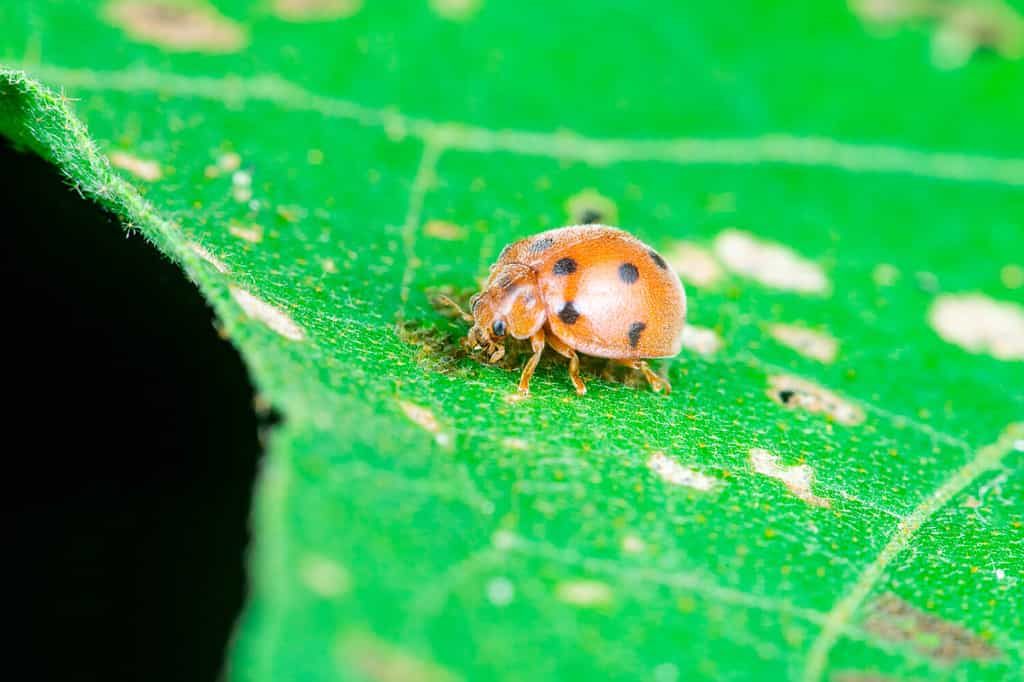
Insects are pancrustacean hexapod invertebrates.
©Muhammad Naaim/Shutterstock.com
Insects are pancrustacean hexapod invertebrates. They belong to the class Insecta or Hexapoda and are the largest group within the family of arthropod phylum. The scientific name is Insecta. There is also the group of Arachnida. Here is where we classify the likes of spiders.
Insects are part of a bigger group called Arthropoda. The group encompasses every creature with segmented bodies and legs and exoskeletons. Animals like mites, spiders, and ticks make up the phylum Arthropoda. However, other arthropod classes include Diplopoda and Chilopoda.
We couldn’t possibly cover all the types of insect information that’s out there in a single post. It would entail possibly millions of animals, including surprises like slugs and snails.
Appearance: How To Identify Them

Insects like ants have a head, thorax, and abdomen and at least three pairs of legs, which are typically jointed.
©Andrey Pavlov/Shutterstock.com
When it comes to size, the vast majority of insects are small. Where they do go in a variety of directions is in width. Insects, in general, are about 0.2 inches long.
You’ll find creatures that are practically microscopic such as the parasitic wasp and feather-winged beetle. But you also have Australian stick insects and African goliath beetles that can be much larger. The Hercules moth, with its wingspan, is an insect that can hit over 10 inches.
Insect characteristics include:
- A chitinous exoskeleton
- A head, thorax, and abdomen
- At least three pairs of legs are typically jointed
- Compound eyes (though there are exceptions for this characteristic)
- A pair of antennae
- Usually have two pairs of wings (exceptions include flies (one pair) and fleas, ants, and lice (none)
Evolution and Origins
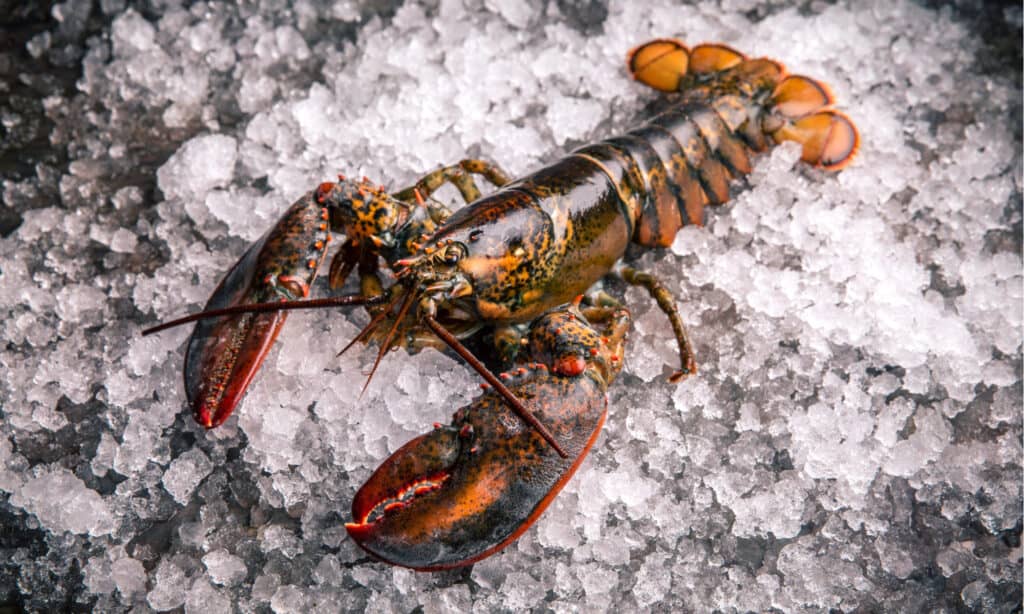
Flies, honeybees, ants, and crickets share a common origin within the arthropod family tree, which also includes modern crabs, shrimp, and lobsters.
©MaryLucky/Shutterstock.com
Insect fossils have been found dating back around 400 million years to the lower Devonian period. During the Carboniferous era, winged insects known as Pterygotes experienced a significant burst of diversification. Another major diversification occurred among the Endopterygota group during the Permian period.
In fact, a recent study offers significant support for the idea that insects evolved from a particular group of crustaceans.
This means that flies, honeybees, ants, and crickets all originate from a branch within the arthropod family tree that also led to modern crabs, shrimp, and lobsters.
Habitat: Where to Find Them
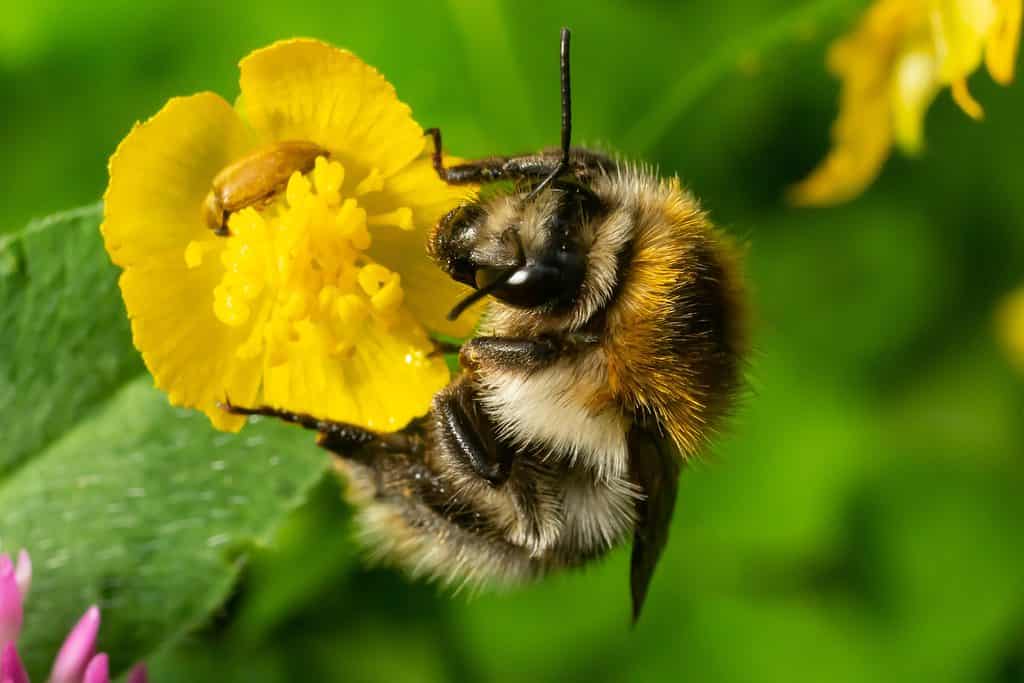
Insects are found everywhere on Earth.
©olko1975/Shutterstock.com
Insects are everywhere. They are, for the most part, invaders. Despite what they may offer ecosystems, almost no one is ever happy to see them in their gardens or homes.
Insects also live in freshwater streams, deserts, snowy mountains, and tropical rainforests. (Only around three percent of insects actually live in or near water.) They hide in your trees, your walls, cupboards, and, unfortunately, your bed.
Let’s take a look at their more common habitats.
Water
Aquatic insects include water striders, mosquitoes, dragonflies, and certain water bugs. Other types of insects spend time in bodies of water to lay eggs. After, they return to land. The predatory diving beetle hunts for food beneath water surfaces.
Hives
Honeybees create elaborate hexagonal structures where they live and work. Worker bees use their glands for converting honey into wax. Other bees chew and then chew it, creating a substance to build a hive. Bees stash hives of hollow trees, rock crevices, and tree branches.
Trees
Many forms of insects take refuge in the branches, leaves, hollows, and crevices of tree bark. Weaver ants in sub-Saharan Africa make nests out of leaves. The creatures go for leaves they can bend and shape. One ant will find the location and the other ants will help pull the leaf into a pocket shape. They then gather larvae silk to use a natural glue to sustain the alteration.
Burrows
Many insects go underground. The reclusive termite, when not invading your spaces, create mounds that extend below and above ground. Inside the structure is a network of tunnels for getting about to find food.
Your Home
Many insects are nomads. They are also quick to settle in if they can locate food sources. Bed bugs use your sleeping accommodations, lurking in beddings until you’re resting. That’s when they come out so that they can bite you.
Termites hide inside your structures, their bites gnawing away at it and leaving serious damage. Ants and moths relentlessly scour your ecosystems in search of nourishment. What type of bug you have depends on where you are and climates and other factors.
Diet: What Do They Eat?

The praying mantis hunts small creatures, including caterpillars, spiders, and moths.
©Karel Bartik/Shutterstock.com
Trying to pinpoint what the insect community diets on would be akin to saying humans eat food. They pretty each what their environments give them access to. Insects eat plants. Predatory insects eat other insects.
Some insects survive by taking bites and then drinking blood. Others chow on nectar or enjoy scraps of food. You can find insects that use their stings to incapacitate prey before feeding.
There are types of animals in the category that don’t eat anything. That includes some moths and mayflies. Reaching adulthood, they lay eggs and then pass away. They don’t require food because their lives end in days and sometimes even hours.
Other insects are healthy eaters. Silkworms manage a 56-day diet of leaves that weigh over 4,000 times their weight. The locust ingests its weight on a daily basis.
Leafhoppers and aphids suck in plant sap. The praying mantis hunts small creatures, including caterpillars, spiders, and moths. Other insect-eaters include assassin bugs and some female mosquitoes.
The creatures have an array of mouthparts for feeding. There are moths with no mouthparts at all. Some chew, others siphon, sponge, dissolve food before taking a meal.
Prevention: How to Get Rid of Them
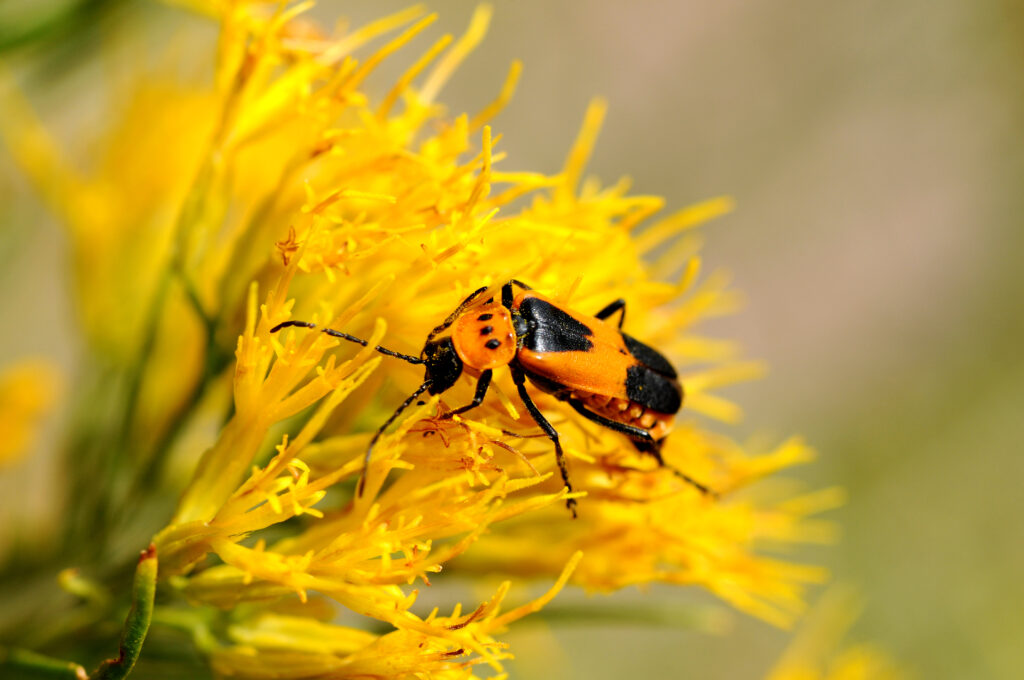
It really just depends on the type of bug and how bad your infestation is.
©Sean Xu/Shutterstock.com
Getting rid of bugs depends on the circumstances. Habitat plays a big part. Framers need to find safe ways to get rid of these pests without causing harm to crops. Homeowners may want to find humane solutions. Others go straight to repellents like pyrethrin or zappers.
Natural repellent alternatives include dish soap (ants) basil (flies), and baking soda for bed bugs. There is no one-stop-em-all solution when it comes to bugs. In many cases, you may need several solutions.
Preventative measures are helpful, additionally, getting rid of bodies of water will deter mosquitoes.
View all 39 animals that start with IInsect FAQs (Frequently Asked Questions)
What Is the Difference Between a Bug and an Insect?
Belonging to the Hemiptera order, bugs are one of many types of insects. Insects usually have three parts of the body and six legs, four wings and antennae. Bugs have mouths shaped like a needle or straw, the proboscis. Among the creatures are bed bugs, stink bugs, water bugs, aphids, though they all fall under the larger insect family.
What Are the Five Characteristics of Insects?
- Insects have an exoskeleton.
- They have three body parts: head, thorax, abdomen
- One of many insect characteristics is six legs, though some (millipedes) are the exception.
- Other characteristics include antennae.
- Most insects have two pairs of wings, though not all insects fly.
How Do You Treat Insect Bites?
Overall, insect bites are benign. Some have a venom that’s killer. In between are rashes, allergic reactions and skin infections. To minimize pain and swelling, use a dampened cloth filled with ice or cold water. Apply hydrocortisone (0.5 or one percent) cream, baking soda paste or calamine lotion to bites or stings several times a day. If symptoms don’t subside or worsen, get medical attention.
What Is the Biggest Insect in the World?
The title belongs to the giant wētā. They are endemic to New Zealand. The largest is a species unique to the Little Barrier Island that reaches over seven inches.
What Insect Has the Shortest Lifespan?
The Dolania Americana, or female mayfly, spends no less than a year at the bottom of streams in nymph form. As an adult, its lifespan is five minutes.
Are Insects Dangerous?
The killer bee can kill when threatened. They attack in hordes. The combination of stings and venom creates a lethal cocktail. According to CNET, mosquitoes cause 750,000 human deaths a year.
How Many Legs Do Insects Have?
Insects generally have six legs.
How Do You Identify Insects?
The typical insect has at least three pairs of legs, three distinct body regions (head, thorax, abdomen), antennae, and a pair of wings.
Thank you for reading! Have some feedback for us? Contact the AZ Animals editorial team.
Sources
- , Available here: https://www.ledfordspestcontrol.com/blog/pest-facts/top-10-dangerous-insects-world/
- , Available here: https://www.insectweek.co.uk/resources/what-makes-insect
- , Available here: https://www.royensoc.co.uk/understanding-insects/facts-and-figures/
- , Available here: https://www.britannica.com/animal/insect
- , Available here: https://en.wikipedia.org/wiki/Insect
- , Available here: https://entomology.unl.edu/scilit/what-insect
- , Available here: https://texasinsects.tamu.edu/insect-orders/
- , Available here: https://flexbooks.ck12.org/cbook/ck-12-middle-school-life-science-2.0/section/9.16/primary/lesson/insect-food-ms-ls/
- , Available here: https://clarkexterminating.com/blog/bug-vs-insect-whats-the-difference/#:~:text=Bugs%20are%20part%20of%20the,four%20wings%20and%20two%20antennae.&text=%E2%80%9CTrue%20bugs%E2%80%9D%20have%20a%20mouth%20shaped%20like%20straw%20or%20needle.
- , Available here: https://quizlet.com/142681714/5-characteristics-of-insects-flash-cards/
- , Available here: https://ucanr.edu/sites/insectconnect/Identification_information/Identify_to_Order/
- , Available here: https://www.mayoclinic.org/first-aid/first-aid-insect-bites/basics/art-20056593#:~:text=Use%20a%20cloth%20dampened%20with,until%20your%20symptoms%20go%20away.
- , Available here: https://www.pbs.org/wnet/nature/alien-empire-mayflies/3413/#:~:text=Researchers%20believe%20the%20record%20for,for%20less%20than%20five%20minutes.

